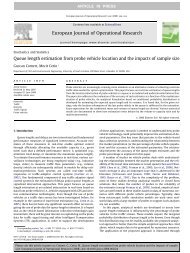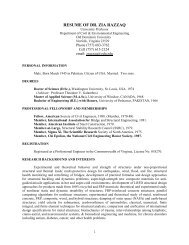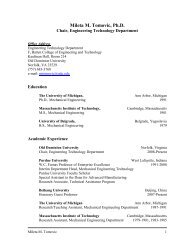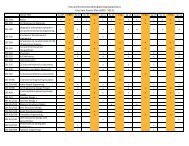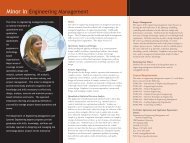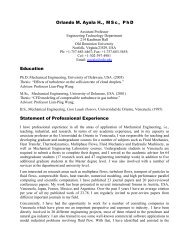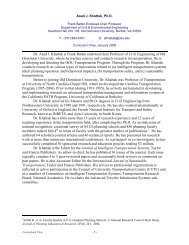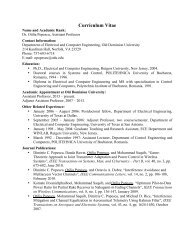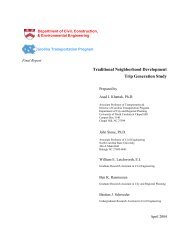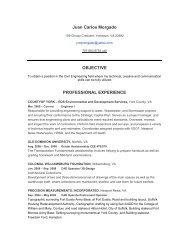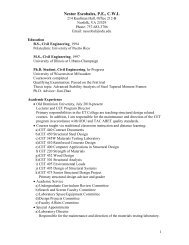storm water management model, version 4: user's manual
storm water management model, version 4: user's manual
storm water management model, version 4: user's manual
Create successful ePaper yourself
Turn your PDF publications into a flip-book with our unique Google optimized e-Paper software.
PrefaceThis <strong>version</strong> of SWMM is an update and improvement of the 1981 release of Version 3. There areseveral extensions and improvements to the <strong>model</strong>, mostly in the area of additional flexibility (e.g.,natural channel cross sections in Extran), features (e.g., subsurface flow routing in Runoff), andconveniences (e.g., improved input and output). A list of major changes implemented in Version4 is given in Section 1 of this <strong>manual</strong>, and Table 1-1 presents a summary of all SWMMcharacteristics. Effort has been taken to adapt the <strong>model</strong> for microcomputer as well as main-frameuse; the same Fortran-77 code will run on either type of hardware, but the primary emphasis is onthe microcomputer (DOS-based). Unfortunately, this dual personality of the <strong>model</strong> means thatSWMM does not take full advantage of either medium. For example, line-printer plots are still usedin lieu of bit-mapped graphics readily available on micros. However, detailed information isprovided about the file structures used for hydrographs and pollutographs so that users can employtheir own software for graphics, etc. (Spreadsheets are especially useful.) Development of pre- andpost-processors is also encouraged.This <strong>manual</strong> is basically an edited <strong>version</strong> of the 1981 Version 3 <strong>manual</strong>. The most significantchanges deal with file <strong>management</strong> (Section 2), unformatted data input (all sections), new optionsfor reading continuous precipitation, temperature, evaporation and wind speed records (Sections 4,10 and 11), and a new subsurface quantity routing routine for the Runoff Block (Section 4 andAppendix X). References on some topics were current at the time of writing which may be circa1980 for some topics, e.g., snowmelt, storage/treatment. The user should obtain familiarity withcurrent information and alter his/her <strong>model</strong>ing practices as necessary.An attempt has been made to provide adequate information in this <strong>manual</strong> for most users so that theycan conceptualize a <strong>storm</strong><strong>water</strong> problem and simulate it using SWMM. As a result, some of the textis rather lengthy, approaching a hydrology textbook in style. Unfortunately, it will still be the user’sresponsibility to seek out the proper references for additional information on <strong>model</strong>ing, especiallywhen dealing with <strong>water</strong> quality. The 1985 SWMM bibliography referenced in Section 1 is still avaluable source of literature citations dealing with all aspects of SWMM usage.Due to the dynamic nature of the <strong>model</strong> improvements, no detailed examples have been includedwithin this <strong>manual</strong> itself. However, several examples are provided on the distribution disks. Theseare complete with input and output files and will greatly enhance the learning process. Regardinglearning about the <strong>model</strong>, the user should start with simple examples for which the answers are wellknown. For example, a good first case study for SWMM is to use just the Runoff Block to simulatethe runoff from steady rainfall onto an impervious surface (e.g., corresponding to Figure 4-14).Inclusion of a single pipe can follow, with more detailed networks that use the Transport or ExtranBlocks later.The authors hope that the user is not “put off” by the length of this volume and the size of theSWMM program. Aside from the fact that the overlaid executable code requires a large computerrandom access memory (about 500 K bytes), the program may often be easily and usefully run witha minimum of input, say a dozen lines of data. For small systems in which time step requirementsiii



